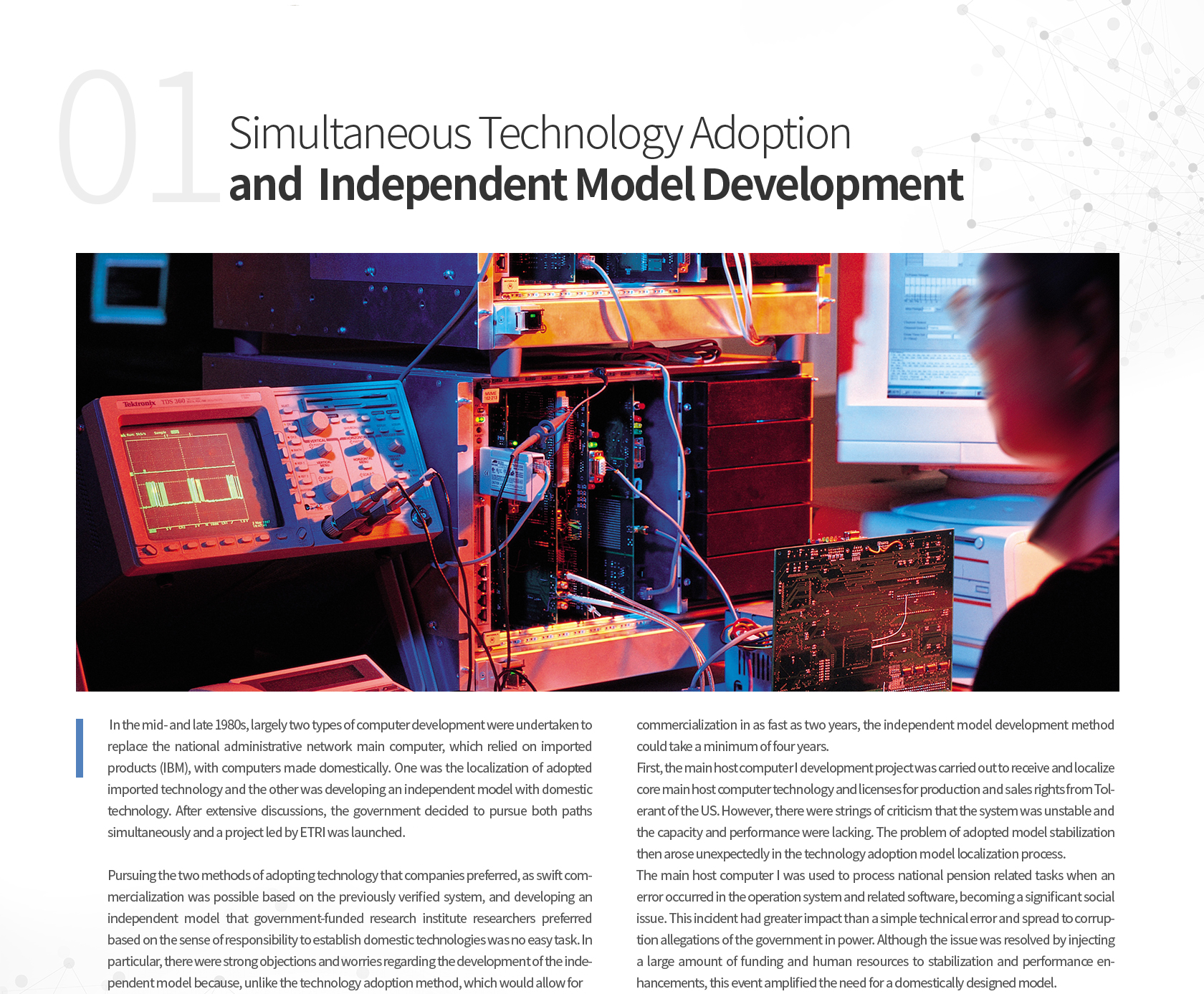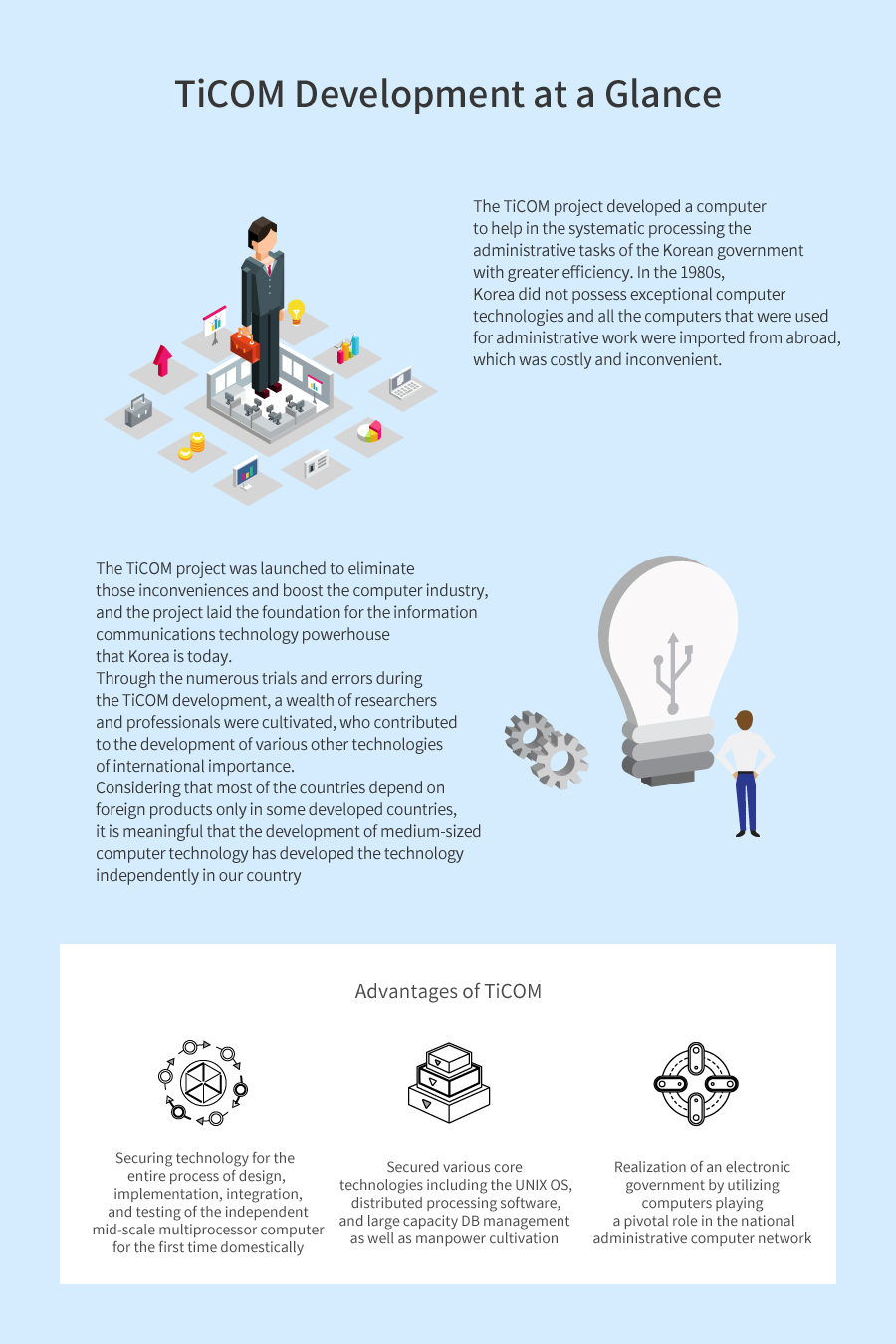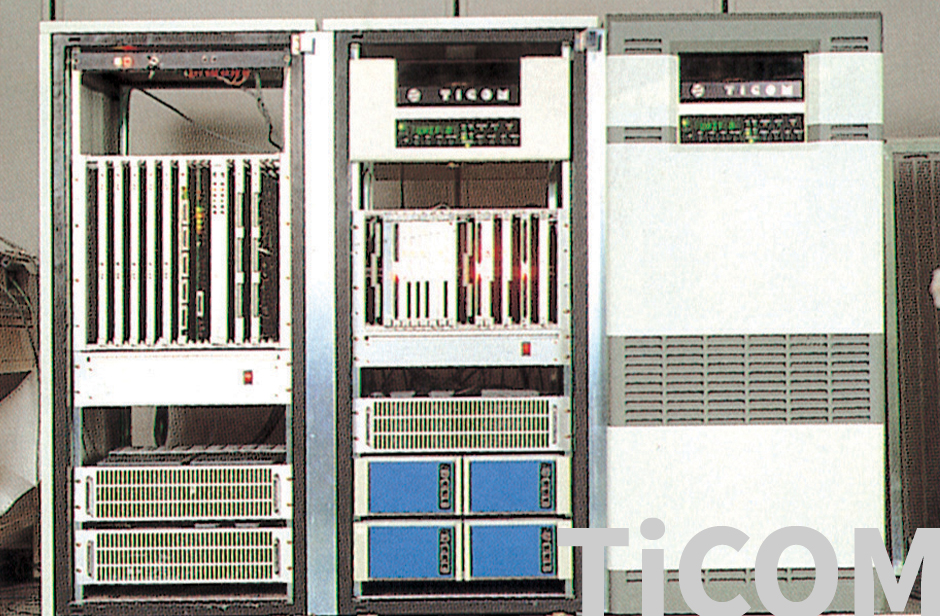




Constructing the Framework
of a ICT Leading Nation
Development of Main Host Computer II (TiCOM) for Administrative Computer Networks

In the 1980s, the mission given to all government-funded research institutes was simple but heavy with responsibility. In order to become independent of computer technology to play a key role in the advanced information society, it was necessary to develop it mainly in industry, academia, and research institute. The greatest objective of all government-funded research institutes at the time was to surpass imported technology and create products with our very own technologies. The national administrative network main computer II(TiCOM : Tightly COupled. Multiprocessing Computer system) is Korea's first medium-sized computer independently developed by ETRI and four domestic computer related companies to quickly and efficiently process various information required for future information retrieval. This project was created from this encompassing goal, and the project raised the domestic computer technology level from PC assembly and OEM-centric production to the capability to develop mid-scale computers.
01
Simultaneous Technology Adoption
and Independent Model Development
In the mid- and late 1980s, largely two types of computer development were undertaken to replace the national administrative network main computer, which relied on imported products (IBM), with computers made domestically. One was the localization of adopted imported technology and the other was developing an independent model with domestic technology. After extensive discussions, the government decided to pursue both paths simultaneously and a project led by ETRI was launched.
Pursuing the two methods of adopting technology that companies preferred, as swift commercialization was possible based on the previously verified system, and developing an independent model that government-funded research institute researchers preferred based on the sense of responsibility to establish domestic technologies was no easy task. In particular, there were strong objections and worries regarding the development of the independent model because, unlike the technology adoption method, which would allow for commercialization in as fast as two years, the independent model development method could take a minimum of four years.
First, the main host computer I development project was carried out to receive and localize core main host computer technology and licenses for production and sales rights from Tolerant of the US. However, there were strings of criticism that the system was unstable and the capacity and performance were lacking. The problem of adopted model stabilization then arose unexpectedly in the technology adoption model localization process.
The main host computer I was used to process national pension related tasks when an error occurred in the operation system and related software, becoming a significant social issue. This incident had greater impact than a simple technical error and spread to corruption allegations of the government in power. Although the issue was resolved by injecting a large amount of funding and human resources to stabilization and performance enhancements, this event amplified the need for a domestically designed model.

02
Push for Information
Technology Dominance
As the need for the development of a mid-size computer using domestic technology was increasingly becoming apparent, the main host computer II development project for domestic administrative computer networks or the TiCOM project finally began in June 1, 1987. The TiCOM project was a massive project involving a total of 932 personnel and funding of 33.5 billion Korean won over four years. The project had more ambitious and grand goals than simply localizing the national administrative network.
This goal was to bring about an administrative revolution where a large government is sought in terms of civil affairs and public services related tasks and a small government at the same time in terms of authority through the developed administrative computer network. Simultaneously, another goal of the project was the realization of a just economic society by implementation of the real name financial transaction system and the integrated land tax system, which were social issues debated at the time. Moreover, by introducing the transition to a computer-centric information intensive society, boosting the information industry, which is larger than the other industries, combined to make a leap forward and become an information technology global leader.

03
Talent Cultivation through
the TiCOM Project
After four years of research, TiCOM development researchers succeeded in developing a super mini class computer in 1991, which was the initial development target. TiCOM, composed of a tightly coupled multiprocessor structure integrating 20 CPU chips together as one, was also named as an abbreviation of Tiger Computer, in reference to the 1988 Seoul Olympics mascot Hodori as the Olympics were being prepared during the development period.
TiCOM was a powerful mid-scale computer that could take on the VAX-8800, which was acclaimed for outstanding performance, and TiCOM had a performance of about 80MIPS. This was a data processing speed of 80 million instructions per second, which was a large improvement from the 4MIPS performance of the Tolerant computer. The developed system could be used while connected to up to 32 1.5MIPS computers in a local area network and the system had sufficient performance for application to the administrative computer network, satisfying the requirements of the network, which were online transaction processing and fault tolerance functionalities.
Korea was able to design an independent mid-scale computer and secure testing technology by undertaking the design and fabrication of the mainboard all the way to the final system. This project greatly contributed to the improvement of the rather weak domestic mid-scale computer hardware design, software core technology, and system production technology. As the mid-scale computer developed and distributed with purely domestic technologies were supplied to public institutions nationwide, swift computerization of the administration was possible.
Above all, the TiCOM development not only brought about the technological success of independently developing a super mini class computer, but also cultivated researchers and professionals during the development process who became the impetus for Korea to later become an ICT leader. The TiCOM development had cultured and established human expertise and the framework for an electronic government through the technology development it achieved. ETRI continues to this day to enrich the lives of people through research and development.



